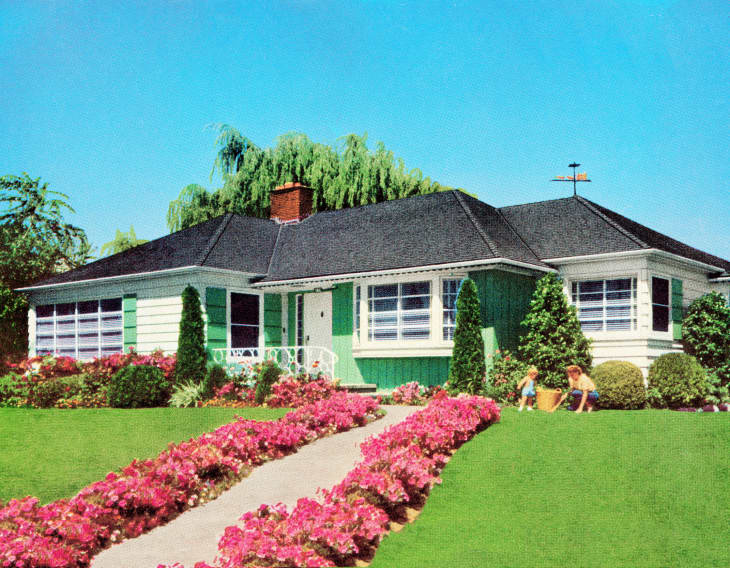From Apartment Therapy:
It’s easy to pinpoint the most iconic mid-century architectural and decor elements (think: wide-low, mass-produced homes, thanks to an economic boom and housing shortage post-WWII), but what about landscaping trends from the ’50s through the ’70s?
Turns out, in this time period, architecture and landscape started to overlap more, landscaping historian Therese O’Malley says. “Indoor-outdoor space … really is underlying design at this point,” she says.
Rachel Carson’s 1962 book “Silent Spring” “had an enormous impact on not only scientific but popular and political thinking about the environment,” O’Malley says, and there was an overall sense of increased botanical awareness.
A piqued interest in gardening and botanicals led to its incorporation into home design and neighborhood design. For instance, Landscape architect Ian McHarg’s 1969 book “Designing with Nature” described exactly that — using nature as a guiding design force.
This era also saw an emphasis on not only “the forces of nature in a place, but the forces of culture in the place,” O’Malley says. The work of architect Lawrence Halprin, for instance, was community-centric, and landscape architect Dan Kiley started the concept of the rooftop garden in the 1960s, which is “very, very common” in cities today, O’Malley says. (Read more.)


















No comments:
Post a Comment